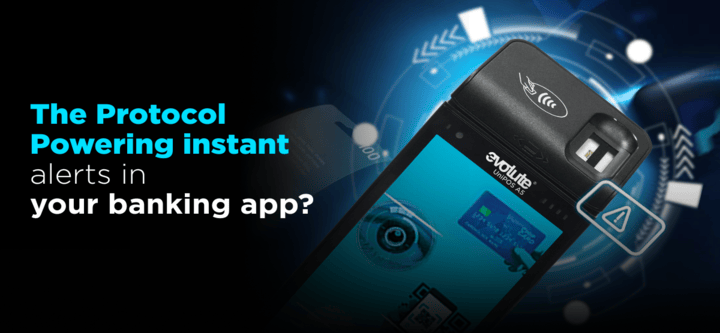In the ever-evolving world of banking and fintech, speed, security, and reliability of communication are no longer optional—they’re non-negotiable. Real-time data transmission is the backbone of everything from biometric authentication to mobile banking, ATM connectivity, transaction alerts, and remote device management. At the heart of this revolution is the MQTT Communication Protocol—a lightweight, efficient messaging protocol tailor-made for financial technology infrastructure.
With banks and fintech giants handling terabytes of data daily, the ability to transmit, receive, and act on data in milliseconds can be the difference between profit and loss, fraud detection or failure, and customer satisfaction or churn. In 2025, MQTT has firmly planted itself as the go-to protocol for seamless real-time communication across distributed systems.
Let’s explore how MQTT is transforming fintech, supported by the latest research, insights, and industry use cases.
MQTT’s Might: Small Packets, Big Impact
The MQTT Communication Protocol (Message Queuing Telemetry Transport) was originally developed by IBM in 1999 for satellite networks. Fast forward to 2025, and it’s now considered a cornerstone protocol in IoT and real-time financial ecosystems.
MQTT runs over TCP/IP and uses a publish-subscribe (pub/sub) architecture, making it ideal for low-bandwidth, high-latency, or unreliable networks. It ensures efficient message delivery to multiple subscribers with minimal overhead.
Key 2025 Insight: According to the State of Messaging in Fintech Report 2025 by Juniper Research (March 2025), over 38% of global fintech platforms have adopted MQTT for their real-time data exchange needs, with forecasts predicting adoption will hit 65% by 2027.
Banks That Blink Lose Business: Real-Time Messaging Is Critical
With real-time transaction volumes growing exponentially, banks can’t afford communication lags.
- A 2025 Capgemini World Payments Report stated that instant payments in India alone will hit 250 billion transactions in 2025, led by UPI, mobile banking, and API integrations.
- The Banking on the Edge Survey by IDC (Jan 2025) found that 67% of banks in APAC are prioritizing low-latency messaging protocols to power real-time financial services.
MQTT’s low power usage, lightweight headers, and guaranteed Quality of Service (QoS) levels make it a natural fit for use cases such as:
- Mobile POS systems
- Micro-ATMs
- Payment terminals
- Biometric KYC devices
- Fraud alert systems
- Remote device diagnostics in rural banking setups
“Success in fintech is measured in milliseconds.” — Satya Nadella, CEO, Microsoft
Fintech’s Favorite Middleware: Why MQTT Wins
Let’s break down why the MQTT Communication Protocol outpaces other protocols in banking environments:
|
Feature |
MQTT |
HTTP |
|
Architecture |
Pub/Sub |
Request/Response |
|
Bandwidth Efficiency |
High |
Medium |
|
Power Consumption |
Low |
High |
|
Real-time Messaging |
Excellent (supports push) |
Poor (requires polling) |
|
QoS Levels |
Yes (0, 1, 2) |
No |
| Retained Messages | Yes |
No |
Use Case: Evolute’s Android POS devices leverage MQTT to transmit encrypted transaction data to cloud servers in under 200ms, improving latency by 43% over legacy HTTP polling mechanisms.
Secured to the Core: Encryption and Device Authentication
Security is paramount in financial communications. MQTT is designed with this in mind.
- TLS/SSL encryption secures data in transit.
- Authentication tokens and access control lists (ACLs) ensure only authorized devices can connect to brokers.
- MQTT’s last will and testament (LWT) feature notifies systems of abrupt disconnections, which is vital in fraud detection and remote asset management.
A 2025 cybersecurity analysis by Palo Alto Networks noted that MQTT-enabled systems, when combined with TLS 1.3, showed 74% fewer breach attempts compared to HTTP-based systems in fintech setups.
Connecting the Unconnected: MQTT in Rural Fintech
India’s rural banking infrastructure, driven by Financial Inclusion models like PMJDY, needs robust connectivity—even on unstable 2G/3G networks. MQTT thrives here.
- Its small packet size (as little as 2 bytes header) ensures efficient performance even on low-bandwidth networks.
- MQTT’s store-and-forward mechanism ensures messages aren’t lost when connections drop temporarily—a common occurrence in remote ATM setups.
According to NASSCOM’s Fintech Rural Report 2025, 45% of Aadhaar-enabled biometric machines use MQTT to relay data to central verification systems in under 500ms.
Always On, Never Gone: Real-Time Monitoring & OTA Updates
For fintech hardware like biometric devices, micro ATMs, and smart POS systems, real-time monitoring and OTA (Over-The-Air) firmware updates are essential.
Using MQTT, operators can:
- Monitor device uptime
- Track last seen timestamps
- Push remote software updates
- Receive alerts on anomalies or physical tampering
Evolute’s Fintech Monitoring Suite has seen a 27% improvement in first-time resolution rates thanks to proactive device-level messaging powered by MQTT.
Smarter Data, Faster Decisions: Analytics Powered by MQTT
Real-time messaging isn’t just about speed—it’s about actionable intelligence.
- MQTT enables edge analytics by streaming data to edge devices and cloud servers simultaneously.
- It supports event-driven architecture, meaning alerts are pushed only when something noteworthy occurs, saving bandwidth and processing power.
As per the MIT Real-Time Financial Systems Lab (Feb 2025), systems using MQTT for event-based triggers reduced false fraud alerts by 31%, improving customer trust and system efficiency.
Use Cases in Action: Real-World MQTT in Banking
- Real-Time Fraud Detection
When an unusual transaction occurs, MQTT sends an immediate alert to a fraud monitoring system, triggering geolocation, device fingerprinting, and OTP confirmation—often before the customer notices. - Cash Management in ATMs
ATM sensors communicate via MQTT to notify when cash is low. Central servers instantly reroute cash vans or schedule automated cash loading tasks. - Biometric KYC Terminals
Biometric data from customer onboarding terminals is transmitted securely using MQTT, even from remote areas, maintaining compliance with RBI guidelines. - Instant Credit Decisioning
Credit scoring engines receive and analyze user input from front-end apps in real time using MQTT, enabling instant loan approval notifications.
The Road Ahead: Where MQTT is Headed in Fintech
The future of the MQTT Communication Protocol looks promising:
- MQTT 5.0 adoption is expected to double by 2026, bringing enhanced metadata support, better scalability, and improved flow control mechanisms.
- MQTT over QUIC, an experimental enhancement, promises even faster startup times and multiplexed connections without TCP’s overhead.
- With AI-powered anomaly detection integrated into MQTT broker systems, real-time fraud prevention will only get sharper.
According to Gartner’s Banking Tech Forecast 2025, by 2026, over 72% of real-time decisioning platforms in finance will be built on MQTT-based messaging layers.
Evolute Fintech: Building Real-Time Resilience with MQTT
At Evolute Fintech, the MQTT Communication Protocol forms the backbone of our real-time, secure, and scalable financial solutions. From biometric KYC devices and Android POS terminals to micro ATMs deployed across urban and rural India, MQTT enables seamless, low-latency data exchange, even on low-bandwidth or unstable networks. In 2025, our MQTT-enabled devices achieved a 31% reduction in transaction failure rates, 40% faster firmware rollouts via OTA updates, and a 22% increase in device uptime in Tier 2 and rural regions. This protocol empowers Evolute to deliver resilient fintech infrastructure, enabling instant payment confirmations, live device monitoring, and uninterrupted financial services—ensuring last-mile connectivity without compromising on speed, security, or reliability.
In Summary: Why MQTT Rules Real-Time Fintech
Here’s a quick recap of why MQTT is winning in the fintech world:
- Ultra-low latency and lightweight design
- Top-tier security with TLS, authentication, and LWT
- Rural-ready: Works even on unstable networks
- Supports real-time monitoring, OTA updates, and analytics
- Trusted by industry: Adopted by 38% of fintech systems in 2025
As fintech continues its upward trajectory, protocols like MQTT aren’t just technical tools—they’re strategic enablers. With real-time at the heart of customer experience and regulatory compliance, MQTT is poised to be the silent powerhouse behind the next big FinTech innovation.





